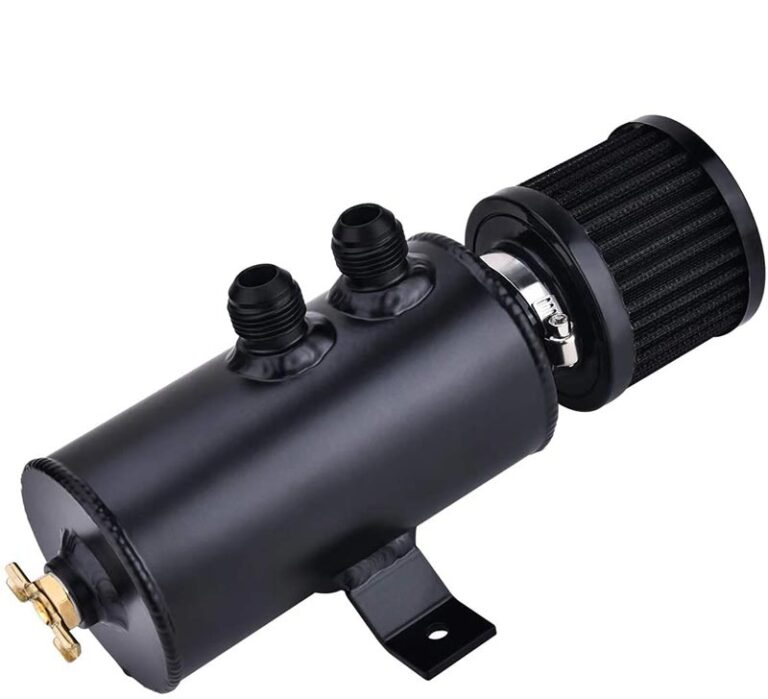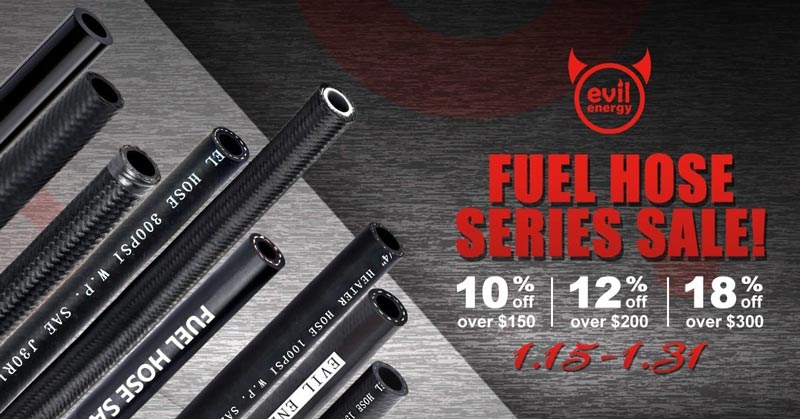Rev Up Your Engine: Get the Scoop on Evil Energy and Inline Fuel Pumps!
When it comes to maximizing your vehicle’s performance, there are a few key factors that can make all the difference. One of these crucial components is your fuel pump. Whether you’re a car enthusiast or simply someone looking to get the most out of their ride, understanding the ins and outs of fuel pumps is essential.
In this blog post, we’ll take a deep dive into two popular options: Evil Energy and inline fuel pumps. We’ll explore what sets them apart, factors to consider when choosing between them, installation processes for various vehicles, and even some tips on how to optimize efficiency with your chosen fuel pump.
So buckle up and join us as we navigate through the world of high-performance fuel pumps. From evil energy catch can to inline marvels – we’ve got you covered! Let’s hit the road together towards enhanced engine power and top-notch performance!
Understanding the Importance of Fuel Pumps in Vehicle Performance
Picture this: you’re cruising down the highway on a sunny day, wind rushing through your hair, and a smile plastered across your face. The engine purrs beneath the hood, effortlessly propelling you forward with each press of the accelerator. But have you ever wondered what makes that exhilarating ride possible?
Enter the unsung hero of vehicle performance – the fuel pump. This small yet mighty component plays a crucial role in delivering fuel from your tank to the engine. Without it, your car would be nothing more than an expensive paperweight.
Fuel pumps are responsible for maintaining optimal pressure and flow rate to ensure that your engine receives the right amount of fuel at all times. They work tirelessly behind the scenes to keep your vehicle running smoothly and efficiently.
But why is this so important? Well, think about it like this: just as our bodies need proper nutrition for peak performance, engines require clean and consistent fuel delivery to operate at their best. A well-functioning fuel pump ensures that every drop of precious gasoline or diesel is maximized for power output.
Whether you’re tearing up racetracks or simply navigating city streets, having a reliable and efficient fuel pump can make all the difference in how your vehicle performs. So next time you hit the road, take a moment to appreciate this unsung automotive hero quietly doing its job under your hood!
The Difference between Evil Energy and Inline Fuel Pumps
When it comes to fuel pumps, there are a variety of options available in the market. Two popular choices are Evil Energy and Inline Fuel Pumps. While both serve the same purpose of delivering fuel to your vehicle’s engine, there are some key differences between them.
Evil Energy fuel pumps are known for their high performance and durability. They are designed to provide a steady and consistent flow of fuel, ensuring optimal engine performance. These pumps feature advanced technology that helps prevent vapor lock and potential damage caused by excessive heat.
On the other hand, Inline Fuel Pumps offer a more compact design that allows for easy installation in tight spaces. They can be mounted directly onto the frame or chassis of the vehicle, eliminating the need for additional brackets or mounting hardware. This makes them an ideal choice for vehicles with limited space under the hood.
When choosing between Evil Energy and Inline Fuel Pumps, there are several factors to consider. You need to assess your specific vehicle requirements such as horsepower needs and fuel system compatibility. Additionally, budget constraints may also influence your decision-making process.
Installation is another important consideration when selecting a fuel pump option. Both Evil Energy and Inline Fuel Pumps come with detailed instructions that make installation relatively straightforward. However, it is always recommended to consult a professional mechanic if you have any doubts or concerns.
To maximize efficiency with your chosen fuel pump, regular maintenance is crucial. This includes checking for any leaks or clogs in the system and replacing filters as needed. It’s also important to ensure that you use high-quality fuel from reputable sources.
Understanding the differences between Evil Energy and Inline Fuel Pumps will help you make an informed decision based on your specific vehicle needs and budget considerations
Factors to Consider When Choosing Between Evil Energy and Inline Fuel Pumps
When it comes to choosing between Evil Energy and Inline fuel pumps, there are several key factors that you need to consider. First and foremost is the compatibility with your vehicle. Different vehicles have different fuel system requirements, so it’s important to choose a pump that is specifically designed for your make and model.
Another factor to consider is the flow rate of the fuel pump. This refers to how much fuel the pump can deliver per minute. If you have a high-performance vehicle or plan on making modifications that will increase its power output, you may want to opt for a higher flow rate pump.
Reliability is also an important consideration. You want a fuel pump that will consistently deliver fuel without any issues or failures. Look for pumps that have positive reviews from other customers and come from reputable brands.
Price is often a deciding factor when choosing between different options. While it’s tempting to go for the cheapest option available, keep in mind that quality does come at a price. Investing in a reliable and durable fuel pump may save you money in the long run by avoiding costly repairs or replacements down the line.
Consider any additional features or benefits offered by each type of fuel pump. Some pumps may have built-in filtration systems or adjustable pressure settings, which can enhance performance and efficiency.
By carefully considering these factors, you can make an informed decision when choosing between Evil Energy and Inline fuel pumps for your vehicle’s specific needs
Installation Process and Compatibility with Different Vehicles
Installing a fuel pump and ensuring compatibility with your vehicle is an important step in maximizing efficiency. The installation process may vary depending on the type of fuel pump you choose, whether it’s evil energy oil catch can or an inline option.
Before beginning the installation, it’s crucial to consult your vehicle’s manual for specific instructions and any potential compatibility issues. This will help ensure a smooth installation process and prevent any damage to your vehicle.
Once you have gathered all the necessary tools and have familiarized yourself with the instructions, begin by locating the existing fuel pump in your vehicle. In some cases, this may require removing certain components or accessing hard-to-reach areas.
If you opt for an Evil Energy fuel pump, make sure to follow their specific installation guidelines provided with the product. These pumps are designed for easy installation and are compatible with various vehicles, but it’s still essential to double-check compatibility before proceeding.
For inline fuel pumps, they usually need to be installed along the fuel line between the gas tank and engine. Ensure that there is enough space in your engine bay for proper placement without interfering with other components.
Take extra care when connecting wires or hoses during the installation process as incorrect connections could lead to performance issues or even potential hazards later on.
Remember that each vehicle may have different requirements when installing a new fuel pump – from electrical connections to mounting brackets – so always refer back to both Evil Energy’s guidelines (if applicable) and your car manufacturer’s recommendations.
By following these steps carefully during installation while considering compatibility factors specific to your vehicle model, you can ensure smooth operation of your chosen fuel pump system without compromising performance!
Tips for Maximizing Efficiency with Your Chosen Fuel Pump
When it comes to maximizing efficiency with your chosen fuel pump, there are a few tips and tricks that can make a big difference in the performance of your vehicle. First and foremost, it’s important to choose the right fuel pump for your specific needs. Whether you opt for an Evil Energy or inline fuel pump, selecting the one that is compatible with your vehicle is crucial.
Once you have installed your chosen fuel pump, regular maintenance is key. This includes checking for any signs of wear or damage and ensuring that all connections are secure. Additionally, keeping an eye on fuel pressure levels can help identify any potential issues before they become major problems.
Another tip for optimizing efficiency is to regularly clean or replace your fuel filter. Over time, debris and contaminants can build up in the filter, restricting proper flow and reducing overall performance.
In addition to maintaining your fuel system components, it’s also important to consider other factors that can impact efficiency. Keeping tires properly inflated, practicing smooth acceleration and braking techniques, and removing excess weight from the vehicle are all simple strategies that can improve gas mileage.
Utilizing high-quality fuels and additives specifically designed to enhance performance can also contribute to maximizing efficiency with your chosen fuel pump.
By following these tips and taking proactive measures to care for both your fuel pump system and overall vehicle health, you’ll be well on your way to enjoying optimal efficiency on every drive!


0 Comments